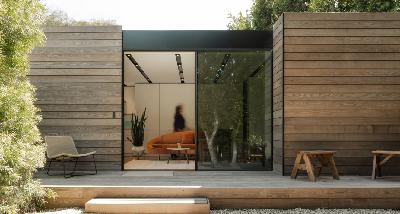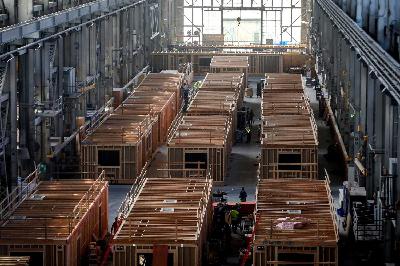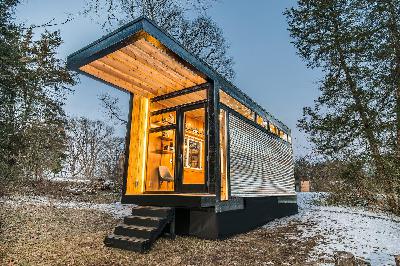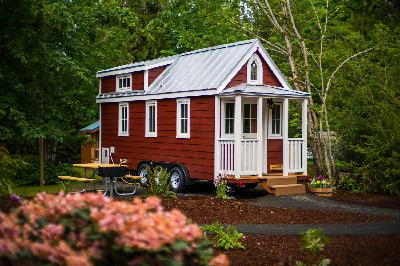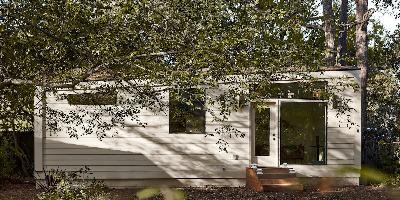Episode 36 - Prefab Pod Live Chat on Building Site Evaluation - Toby Long, Clever Home
Description
Listen to the episode
<figure class="
sqs-block-image-figure
intrinsic
">

</figure>
<figure class="
sqs-block-image-figure
intrinsic
">

</figure>
<figure class="
sqs-block-image-figure
intrinsic
">

</figure>
Transcript
Prefab Review:
All right. Hello everyone. Welcome to Prefab Review Podcast, slash video screen, slash whatever mediums this is on. I'm Michael Frank from Prefab Review and today we are lucky to be talking with Toby Long of Clever Homes. Toby, I think this is his third or fourth time doing video and audio stuff on our platform, but he's been one of the most helpful people in the industry to us. (Prefab Pod 2 w/ Toby Long & Prefab Pod 15 w/ Toby Long) He's an architect based out of the Bay Area. And I guess Toby, you can speak more to what you do, but I'd say doing a combination of high-end single-family homes as well as multifamily and commercial stuff. And the motivation behind having Toby on today beyond just his general wealth of knowledge on prefab stuff is to talk about evaluating land and lots. So we in general get lots of questions of people sending us Redfin links, sending links to Zillow and saying, "Hey, should I buy this?
Can I just buy this piece of land that's $7,000 and throw a prefab box on it, and have I just figured it out a cheaper way to build housing? Typically speaking, that's not true, but there are cases where that arbitrage is real or where it makes a ton of sense to build. So what we're going to do during this video is we're going to talk through four or five examples that are pretty indicative of the kinds of land that we discuss with people every day and basically go back and forth and chat live. So we've each looked at these a tiny bit, but not that much. But right off the bat, one. Toby, how are you?
Clever Homes:
I'm doing good, Michael. Thank you. Thanks for having me today.
Prefab Review:
Okay. So before we do this, the other motivation behind this is for our newsletter and our site, we're actually revising our typical land diligence checklist because we think it has some areas that could be improved. So Toby, I was going to show you what we have at first and feel free to rip it apart and then we can use that as context of other stuff you'd look for and then we'll dive into land. All right, so everyone should be able to see my screen right now. So basically, the number one things just running through these points are site access, and this is really particularly with modular homes in mind. Can you get a crane and a truck back there? Because a lot of the projects we work on, we're talking about modules that are, what? 40, 50 feet long. Sometimes maybe 20 feet long.
So you basically need to be able to get them back there, and then you need to be able to get a crane back there. Then, the power lines thing, I don't know your thoughts on this. I consider this not typically a deal breaker, but something that can make life more complicated. And then, there's just a bunch of stuff. Most of these aren't things that are necessarily deal breakers outside of, can you access it with a truck and a crane, but it can make things a lot more expensive. So is there a reasonable building pad? Is there a driveway, if that's required? Sometimes you get these lots that really aren't buildable because of setback issues or other weird stuff.
Then, the survey and geotech. Again, especially the geotech stuff, a lot of times that's more of a determinant of cost in terms of more expensive, complicated foundations. Are there floor area ratio max coverage issues? Again, that's largely permitting stuff. Can we actually build what we want to build on the site? The design review process, HOA stuff we have all the time in certain more Tony areas, making sure that what you want to build is consistent with that.
One of those things since we've been doing this whole company and modular stuff over the last five years or so that I've been really pleasantly surprised with has been how helpful local planning departments frequently are when you just call them in terms of educating on a lot of these issues. So we typically recommend that everyone calls the local planning department at least before, even if it is sometimes after the lands under contract, but at least before completing a transaction. And then, there's a bunch of other stuff. If it's a high risk area, again, you can typically figure out insurance and stuff like that, but it can make things a lot more complicated, a lot more expensive.
And then, I think the other areas that typically get really expensive though you can typically deal with them that I think we'll talk more about in the remote land situation, are how close are utilities in a working road. Just because, if you're going to be paving a one-mile driveway or extending power from somewhere, it seems like that can get complicated. So just off the bat, I know you haven't looked at this list, are there other checklist items that you look for right away when evaluating lots?
Clever Homes:
Yeah, I think this is great, Michael. I think that you're doing a real service for people and trying to get ahead of a lot of these questions that I think most folks don't necessarily think about right away. Obviously this is a really hard part of projects for so many reasons. It's easy to get really excited about land, I think people see opportunity in certain land's values certainly where that starts to look really inexpensive. As you reflected, that's often an indication of complexity. I do think that this is such an important aspect of building any kind of project for sure. You've got to connect with the land, there's a visceral element here that's hard to quantify. We have to want to be in certain areas, and of course it's additionally challenged by the fact that certainly here in California there's just not a lot of land.
There's a lot of land, but land for sale that's buildable is getting harder and harder to find. The good news I think, is that construction technology and techniques are continuing to advance and improve so we can build on topography or in areas that were previously really challenging, I think, for building projects. And I would apply some of this to offsite construction and modular building in particular. I do like that you start this process with the assumption of modular construction as we're all in promotion of factory partnership and prefabricated building methods in all of their various forms. My pitch to clients is often to start with modular. It is maybe the most profound change to the way that we build, but it's also the most rigorous. And if you can start to navigate through a modular scheme on a particular building site, I think all of the other techniques within the industry are of course applicable, assuming that Modular construction starts to beco


